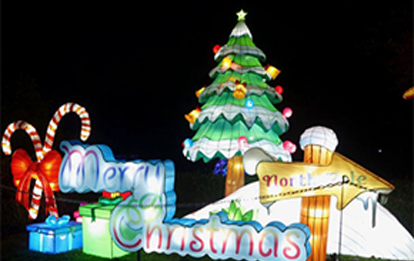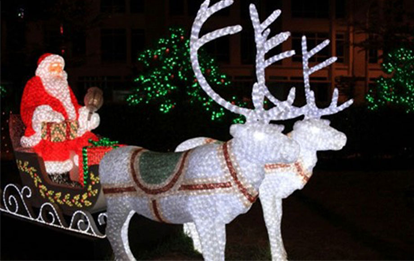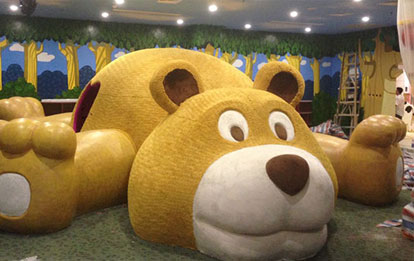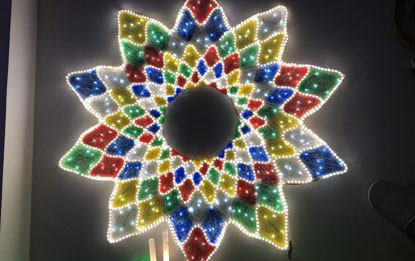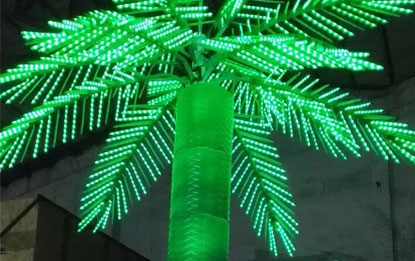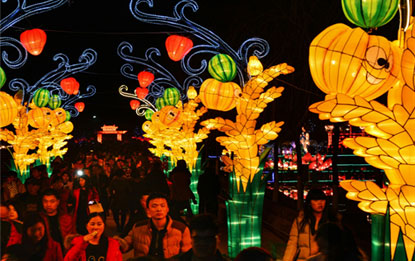The Chinese Lantern Festival has a long history in the Chinese community around the world. It is also known as the Shangyuan Festival, the Little First Month, the New Year's Eve, the New Year or the Lantern Festival, and the first half of the first month. The lantern exhibition is held on the fifteenth day of the first lunar month every year. This day is the first full moon night of the Lunar New Year, symbolizing the arrival of spring and the last day of the traditional definition of Chinese New Year.
1. Activities and customs of the Chinese Lantern Festival in the Ming Dynasty
Qu You, Qiantang of the Ming Dynasty, "Double-Headed Peony Lanterns": "Every year on the eve of Yuan Dynasty, five nights of lanterns are displayed in Mingzhou. All the ladies and gentlemen in the city have to look at it." Young men and women go out to watch the lanterns and take the opportunity to get acquainted and meet, so it is also known as "Chinese Valentine's Day".
2. Activities and customs of the Chinese Lantern Festival in the Han Dynasty
Buddhism has the custom of lighting a lamp on the fifteenth day of the first lunar month. In Taoism, Shangyuan Festival is the birthday of Emperor Tianguan (Yao according to folklore), the fifteenth day of the first month is Shangyuan, the fifteenth day of July is Zhongyuan, and the fifteenth day of October is Xiayuan, which belong to heaven, earth and water respectively. These three officials are in charge of the emperor. Shangyuan Festival is the birthday of Tianguan, and Buddhist lanterns are made and lit to celebrate. At the end of the Tang Dynasty, the imperial court officially worshipped.
There are many theories about the origin of the Chinese Lantern Festival lantern exhibition, which can be traced back to the Qin and Han dynasties. At the end of the Qin Dynasty, there was a saying: "On the fifteenth day of the first lunar month, lanterns were burned to worship the Taoist Taiyi God". Originally called "Shangyuan", it is the day when farmers pray for a good harvest, and it is also the birthday of the Taoist official. People held torches in the fields to drive away insects and beasts, hoping to reduce the infestation and praying for a good harvest.
There is also a saying that Emperor Wu of the Han Dynasty obeyed the absurdity and built the Taiyi Temple in Ganquan Palace. The most solemn sacrifice to Taiyi God was on the fifteenth day of the first month. There are meteors passing over the altar, and since then, the custom of fifteen lanterns on the first lunar month has been formed.
There is also a saying that Emperor Ming of the Han Dynasty believed in Buddhism and listened to Cai Bei's advice. At the end of the Eastern Han Dynasty, the Lantern Festival was officially formed as a festival.
In the early years of the Sui Dynasty, the Chinese Lantern Festival lantern exhibition was fully formed. In the Tang Dynasty, when the national power was unprecedentedly powerful, the Lantern Festival was very prosperous. No matter in the capital or in the towns, colorful lanterns were hung everywhere. People also made huge lamp wheels, lamp trees, lamp posts, etc. The fire trees and silver flowers all over the city were very prosperous and lively.
3. Activities and customs of the Chinese Lantern Festival in the Song Dynasty
The Lantern Festival in the Song Dynasty is more colorful. The Lantern Festival lasts for five days. The styles of Lantern Festival lanterns are complex and diverse. It is a very pleasing thing to visit the Lantern Market. The poet Xin Qiji wrote: "A thousand trees are blooming at night in the east wind, and even more blowing down, the stars are like rain", which means that there are countless lights and fireworks like a shower of stars during the Lantern Festival in the Song Dynasty. At that time, guessing lantern riddles also emerged, that is, writing various lantern riddles on paper and pasting them on lanterns, and those who guessed correctly could get a small reward. This kind of entertainment and puzzle activity is loved by people and widely circulated.
During the Ming and Qing Dynasties, the Lantern Festival was usually regarded as the end of the Spring Festival by the people, and the activities became increasingly diversified: eating glutinous rice balls, viewing lanterns and entertaining parades were the three main axes of the Lantern Festival. Lantern displays last longer. The lights are lit since the eighth day of the first lunar month, which is called the "Shangjie Festival", and the night of the eighth day of the lunar month is called the "Shangjie Festival", which is the longest Lantern Festival lantern exhibition in Chinese history.
4. Activities and customs of the Chinese Lantern Festival in the Qing Dynasty
The Qing Dynasty was only three days, but the lights were bright, and the lantern display was more exquisite and fantastic, and it was still very attractive. In the Ming Dynasty, the palace would also be decorated with lanterns and colorful, and imitated folk customs. A market was set up in the palace, with acrobatics and other entertainment performances. Everyone in the palace set off fireworks, firecrackers, and children's jacquard lights.

 English
English  日本語
日本語  한국어
한국어  français
français  Deutsch
Deutsch  Español
Español  العربية
العربية  tiếng việt
tiếng việt  ไทย
ไทย  Polska
Polska  Nederland
Nederland 
